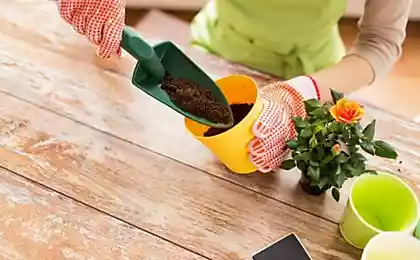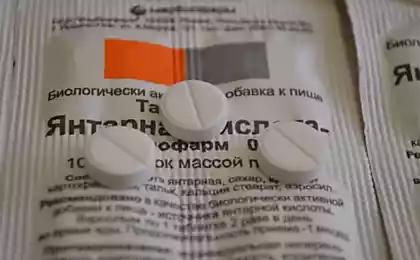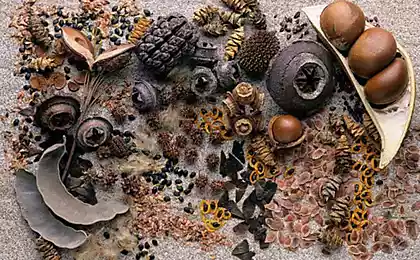485
This tool revives even hopeless plant
Succinic acid for plants, including room, is very common. This growth regulator, and anti-stress product, and the Normalizer of the natural microflora of the soil. It helps the plant to better absorb nutrients from the soil, to cope with adverse environmental conditions such as heat, frost, drought, excess humidity and to recover from diseases or pests,to produce more chlorophyll to grow rapidly and bring a greater harvest.
Succinic acid is found in small quantities in amber, lignite, animals and plants. It is produced in the form of tablets or white powder that can easily dissolve in water. The use of plantsdoes not require any special precautions, because this substance is completely non-toxic to people and Pets and safe for the environment because of the very rapid eating microflora of the soil.

It should be noted that succinic acid for plants is not a fertilizer and does not replace them. It helps to better assimilate insertion feeding, prevents excessive accumulation of nitrogenous substances, acts as a natural activator of resilience. Its application on individual parts of the plants stimulates their growth. Therefore, in floriculture and used for soaking, spraying and watering with a solution of this drug. Its effect is evident even at low concentrations (0,002% solution).
Succinic acid for plants — application:the working solution is prepared in соотношении2 g per 1 — 2 liters of water. The right amount of powder (or tablets) dissolve first in a small amount of warm water, and then adjusted to the desired volume with water at room temperature.Overdose of the drug is not dangerous, as an excess is used by microorganisms and the plant itself as food. The solution can be used for 3 days, then it is completely decomposed by living microorganisms.
To stimulate growth of new shoots should be sprayed with working solution on the entire ground part of the plant and let it dry. After 2 — 3 weeks, the procedure can be repeated.
For stimulation of root growth , soak your root system or root collar in a solution of succinic acid. Application to plants of this solution is strictly individual in relation to the concentration and time of soaking, which ranges from 20 minutes to 4 hours. In most cases, for a very long time to leave the plant is not recommended. As a rule, to achieve the desired result it is enough 30 — 40 minutes.
To improve rooting of the cuttings need to be soaked in the working solution for 24 hours by submerging the sections of the cuttings, 2 cm in depth.

Soaking seeds before planting also lasts 24 hours, you can also germinate the seeds in the prepared solution. Before planting, the seeds should be well dried.
For the purpose of resuscitation of plants used spray shoots, leaves and roots solution of succinic acid from the calculation of 0.25 g (1 tablet) to 1 liter of water.
For more abundant flowering plants of open ground, spend them spraying 1 to 3 times a week. It is desirable to start treatment before flowering, then treatment can be repeated.
Succinic acid for plants in greenhouses (potted plants) is applied once in 2 — 3 weeks. published
P. S. And remember, only by changing their consumption — together we change the world! ©
Source: www.vazonchik.com.ua/yantarnaya-kislota-dlya-rastenij/
Succinic acid is found in small quantities in amber, lignite, animals and plants. It is produced in the form of tablets or white powder that can easily dissolve in water. The use of plantsdoes not require any special precautions, because this substance is completely non-toxic to people and Pets and safe for the environment because of the very rapid eating microflora of the soil.

It should be noted that succinic acid for plants is not a fertilizer and does not replace them. It helps to better assimilate insertion feeding, prevents excessive accumulation of nitrogenous substances, acts as a natural activator of resilience. Its application on individual parts of the plants stimulates their growth. Therefore, in floriculture and used for soaking, spraying and watering with a solution of this drug. Its effect is evident even at low concentrations (0,002% solution).
Succinic acid for plants — application:the working solution is prepared in соотношении2 g per 1 — 2 liters of water. The right amount of powder (or tablets) dissolve first in a small amount of warm water, and then adjusted to the desired volume with water at room temperature.Overdose of the drug is not dangerous, as an excess is used by microorganisms and the plant itself as food. The solution can be used for 3 days, then it is completely decomposed by living microorganisms.
To stimulate growth of new shoots should be sprayed with working solution on the entire ground part of the plant and let it dry. After 2 — 3 weeks, the procedure can be repeated.
For stimulation of root growth , soak your root system or root collar in a solution of succinic acid. Application to plants of this solution is strictly individual in relation to the concentration and time of soaking, which ranges from 20 minutes to 4 hours. In most cases, for a very long time to leave the plant is not recommended. As a rule, to achieve the desired result it is enough 30 — 40 minutes.
To improve rooting of the cuttings need to be soaked in the working solution for 24 hours by submerging the sections of the cuttings, 2 cm in depth.

Soaking seeds before planting also lasts 24 hours, you can also germinate the seeds in the prepared solution. Before planting, the seeds should be well dried.
For the purpose of resuscitation of plants used spray shoots, leaves and roots solution of succinic acid from the calculation of 0.25 g (1 tablet) to 1 liter of water.
For more abundant flowering plants of open ground, spend them spraying 1 to 3 times a week. It is desirable to start treatment before flowering, then treatment can be repeated.
Succinic acid for plants in greenhouses (potted plants) is applied once in 2 — 3 weeks. published
P. S. And remember, only by changing their consumption — together we change the world! ©
Source: www.vazonchik.com.ua/yantarnaya-kislota-dlya-rastenij/






















